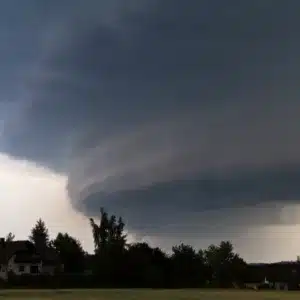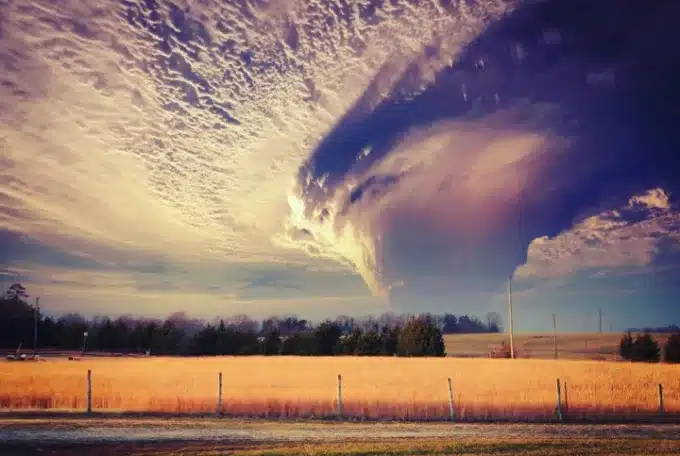How to Prepare for a Tornado: A Comprehensive Guide

Florida is more renowned for its hurricanes, but tornadoes hit our beautiful State quite often as well. In fact, Florida is the second most affected State after Oklahoma, so Floridians must be prepared for a tornado eventuality.
Embrace Awareness: The First Step in Tornado Preparedness
When a tornado is about to hit your area, your first line of defense is awareness.
Stay informed about the weather conditions in your area. Watch out for tornado warnings and download a reliable winter weather app such as those provided by the National Weather Service. Sign up for local emergency alerts to receive timely information about changing weather conditions, too. Social media like Twitter also provide real-time updates for tornado watches and warnings.
Keep a battery-powered radio handy as power lines often fail during a tornado event. Remember, tornadoes can strike quickly, so staying updated is crucial. Additionally, Government agencies and organizations like the American Red Cross provide crucial information during tornado events.
Utilize a reliable tornado warning system to ensure you receive timely alerts, allowing you to take swift action and find a secure location.
If you have lived in Florida, United States, for a few years, you probably already know the telltale oceanic and atmospheric signs on the horizon that a tornado is about to hit your area. Here are the most common environmental cues that a tornado is approaching your place:
- Dark, often green sky,
- low-lying clouds,
- large hail,
- a continuous roar and rumble,
- and of course the well-known funnel-shaped cloud. By the time the funnel-shaped cloud is visible, though, you need to be in safety.
Create Your Tornado Safety Zone: A Haven in the Storm
Control and prevention are very important. Identify the safest places in your home — typically a basement, storm cellar, or an interior safe room on the lowest floor with no windows. This safe zone should be your go-to spot when a tornado warning is issued. If you have family members living with you, organize a protection plan and make sure every member is aware of the contingency plan in case of a tornado.
Stock your safe area with essentials: non-perishable food, water, flashlights, extra batteries, a first aid kit, and blankets. Think of it as your personal bunker that stands between you and the whirlwind outside. Don’t forget your pets!
Develop a Tornado Plan: Teamwork for Safety from Severe Weather
Tornado preparedness is a team sport. Involve your loved ones in creating a tornado emergency plan.
Discuss how to receive alerts, where to take shelter, and how to communicate if separated. Again, remember that mobiles might not be functioning at peak performance.
Also, practice tornado drills at least twice a year to ensure everyone knows what to do when a tornado is on the horizon.
Secure your home: fortify against the winds
While no home can be completely tornado-proof, some measures can minimize damage. Secure heavy furniture and appliances to the walls. Consider installing storm shutters or impact-resistant windows to protect your home interior.
Keep trees and shrubbery trimmed as a tornado can turn them into weapons. Secure loose items in your yard — they can turn into dangerous projectiles in strong winds and break your home.
Document and insure: your safety net
Photograph or video your home and belongings for insurance purposes.
Ensure that your insurance policy covers tornado damage and understand what it entails. Make a point of your deductibles and the terms and conditions for your insurance policy to cover you in case of tornado damage.
In addition, keep important documents in a safe, accessible place, ideally in a waterproof and fireproof container.
Stay calm, stay informed: the power of composure
During a tornado warning, stay calm and stay informed. Use your phone or battery-powered radio to keep track of the tornado’s progress. Remember, information is power — the more you know about the tornado’s path, the better prepared you’ll be. Stay aware that tornado warnings are issued by county, and tornadoes can happen unexpectedly.
The aftermath: safety and recovery
Once the tornado has passed, be aware and careful.
Watch out for debris, downed power lines, and structural damage. Reach out for help if needed and contact your insurance company as soon as possible. This is where having a public adjuster like Fraser can be invaluable so you can handle the complexity of post-tornado claims and filing your insurance claim.
Fraser Public Adjusters: Your Ally in Tornado Preparedness and Recovery
While we hope you never face the fury of a tornado, Fraser Public Adjusters is here to assist in both preparation and recovery. Our expertise goes beyond handling claims; we’re committed to helping you and your community stay safe and bounce back stronger.
Remember, preparing for a tornado doesn’t have to be a daunting task if you know the signs and stay informed through weather radio or social media. With the right knowledge and resources, you can face these natural disasters with confidence.
For more tips on tornado watches, preparedness, and recovery, contact Fraser Public Adjusters. We’re not just your adjusters; we’re your partners in safety and resilience.
Frequently Asked Questions
What should I do to prepare for a tornado?
To prepare for a tornado, stay informed about your local weather conditions and warnings. Have a plan for where to take shelter, such as a basement or an interior room on the lowest floor, away from windows. Also, prepare an emergency kit containing necessities like water, non-perishable food, a flashlight, batteries, a first aid kit, and important documents.
Is it safe to stay in a mobile home during a tornado?
No, mobile homes are not safe during tornadoes. If you live in a mobile home, take shelter immediately in a more secure building. When a tornado warning is issued, go immediately to a storm shelter, a nearby building with a basement, or the lowest floor of a nearby sturdy building. Protect your head during the tornado by using a helmet in order to shield yourself from potential debris and impacts.
What should I include in my tornado emergency kit?
Whether at home or outside, your tornado emergency kit should include water, non-perishable food, a flashlight with extra batteries, a first-aid kit, essential medications, copies of important documents (like IDs and insurance policies), a whistle to signal for help, and sturdy shoes. If you have infants, don’t forget baby supplies. Also, include items for your pets if you have any.




